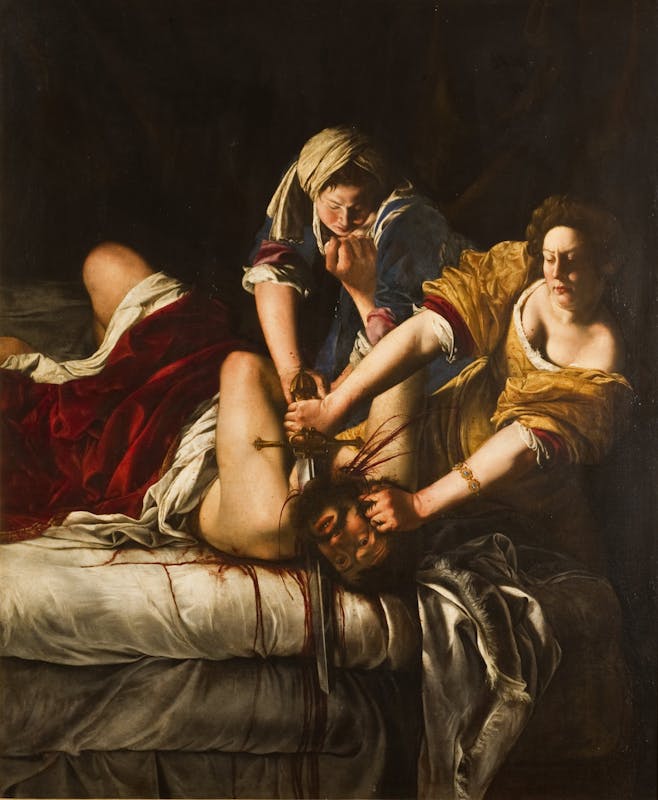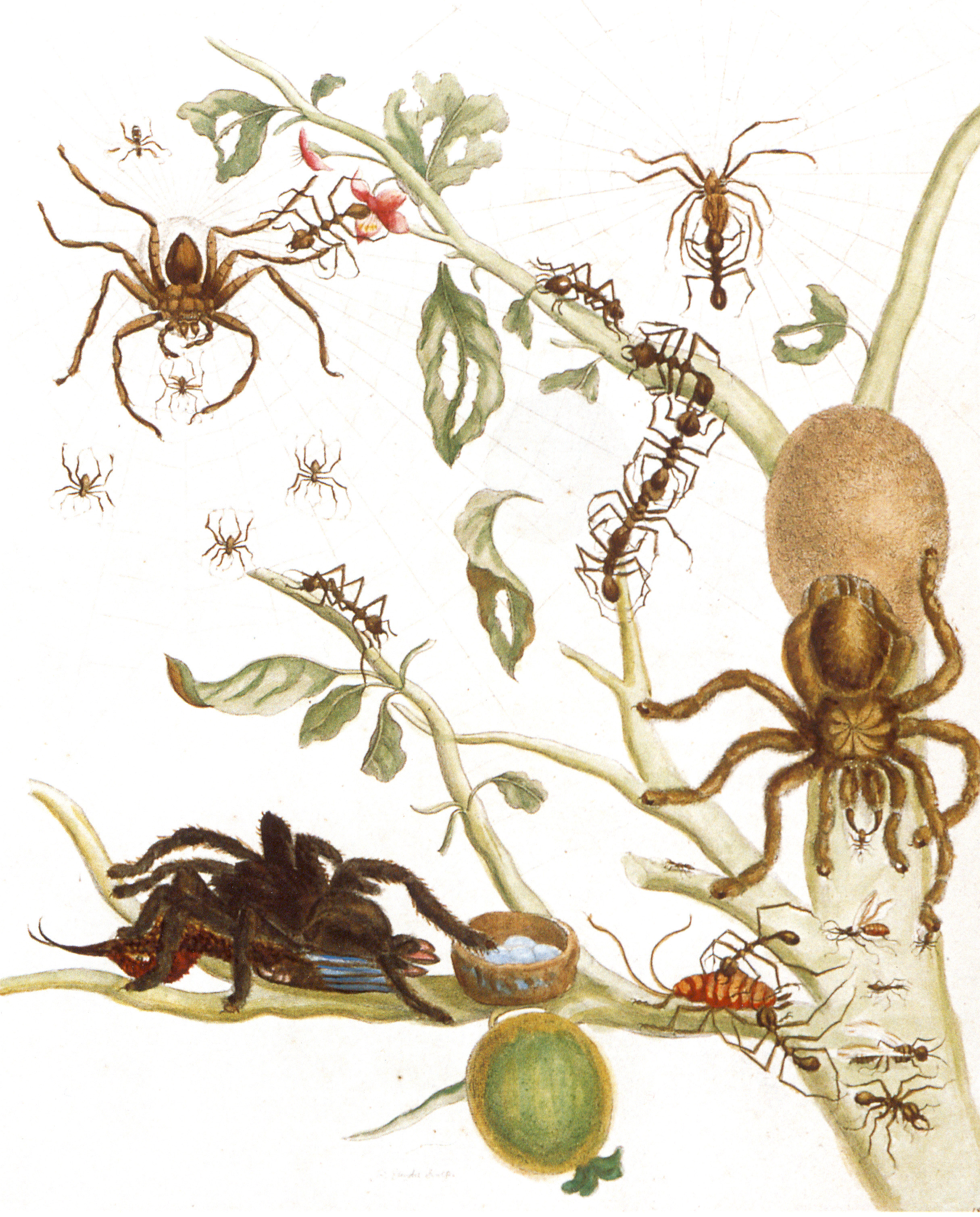We have been embedded with images of masculine and feminine roles in society dating all the way back to the Middle Ages and the Renaissance. Women are caretakers, women have no rights, women are child bearers. The list goes on, but most importantly, women were inferior to men. This never ending cycle of societal roles of women continue from century to century, evident in the works of women artists prominent in their times.
During the Middle Ages, the role of women was often dictated by the bible, as religion was the main government structure, where many women became nuns in convents. And when they were artists, they were “working in businesses owned by male family members” (The Guerilla Girls, 19). Religion in the Middle Ages shaped a lot of the inferiority that women faced then; a “Christian ethic that stressed obedience and chastity” (Chadwick, 44). While they were allowed to become nuns, they were still not able to obtain the forms of power that men had in the churches, such as being the priest. Being a nun in a convent was really the only way women could exercise power, and those who married into power still could not lead their lives as freely as their husbands.
When we look at art in the Middle Ages through the Renaissance, we can see how female artists are not given the credit owed to them, simply because of the fact that they are women; and to men, women were made to entertain the man. There were more than plenty male artists during the Renaissance, most famously Michelangelo, Raphael, and Leonardo. But we must not overlook the many female artists there were as well; Elisabetta Siriani, Sofonisba Anguissola, and Artemisia Gentileschi to name a few. Men during the Renaissance believed “the seduction of a virgin a horrible crime but the rape of a widow no big deal” (The Guerilla Girls, 31). This predatory trait of the renaissance man is something Artemisia Gentileschi knew all too well. She, herself, was raped by an older man named Agostino Tassi who was a colleague of her father.
 |
| Artemisia Gentileschi, Judith Slaying Holofernes, c. 1620 |
After this unfortunate event, she continued to create paintings that portrayed women seemingly seeking revenge from the man. We might infer that her paintings is her way of expressing her anger and resentment towards Agostino Tassi, and the ways in which men prey on women like her. In the painting above, Judith Slaying Holofernes, Gentileschi shows Judith looking directly at Holofernes, fearlessly shoving the sword through his neck. We can feel her frustration and anger evident in her paintings. Because Artemisia was the daughter of an artist himself, Orazio Gentileschi, careers and new opportunities for women artists emerged.
Sofonisba Anguissola, one of six daughters of a noble man, was taught to paint at a young age of fourteen. One of her more popular works, Self Portrait, exemplifies her female virtue seen in the black attire she wears that might represent her modesty and her role as a woman in society; invisible and silent. However, her paintings also paved the way to the "possibility of painting to women as a socially acceptable profession" (Chadwick, 77). Though she paints herself in black attire so as not to be seen, her painting also becomes a symbol of her skills as an established independent artist. Interestingly enough, she has not sold a single one of her paintings, yet she continues to be an accomplished painter of her time.
The life of a woman during the Renaissance was like living in the shadows of the man, and unfortunately, this continues until the seventeenth and eighteenth century, and even moving forward. During this era, a woman's place was set according to both "nature and reason, to be in her home, taking care of those around her" (The Guerilla Girls, 39). To stay at home was thought to be in a woman's nature. And when they pushed against these stereotypes, they were shunned. But to women like Anna Maria Sybilla Merian, she knew that you were damned if you do, and damned if you don't. She joined a religious group who didn't believe in marriage, and left her husband!
 |
| Anna Maria Sybilla Merian, Metamorphosis Insectorum Surinamensium, Amsterdam |
We must not forget that women lived in patriarchy, and the nineteenth century is no different. During this time, the nineteenth century sought to end slavery through the abolitionist movement and women fought for their rights. For Edmonia Lewis, she had to fight racism and sexism. In 1862, she was accused of poisoning two of her roommates and beaten by a mob. Edmonia Lewis carved marble and created sculptures that became a big hit that sold, even to people who weren't even looking to buy! She was treated as an "exotic oddity" (The Guerilla Girls, 51) which she used to her advantage. Many tourists came to her studio to watch her create art, where being black and being a woman intersected and she proved that she could do it.
 |
| Edmonia Lewis, The Death of Cleopatra, 1876 |
Discovered recently in the 1970's at a junkyard in Chicago, the sculpture pictured above was on of her celebrated work. Edmonia Lewis depicts the famous queen of Egypt, Cleopatra after her suicide, still sitting on her throne. She shows how powerful Cleopatra was, even at the time of her death, and how she resembles women living in a man's world. Even though her death was a suicide, it was nevertheless on her terms, and sitting on her throne shows that power and the agency she had of herself.
When we look back from the Middle Ages to the Renaissance, and eventually through the nineteenth century, we might think that women are still at the same place they were. While it might be true that women still lived in a patriarchal world, women were becoming more and more fearless and bold to set out and lead a life of their own. It's an eat or be eaten world; and for women like Artemisia Gentileschi, Sofonisba Anguissola, and Edmonia Lewis to name JUST a few, they were not meant to be prey. It is not in women's nature to stay at home. It is not in women's nature to depend on the man. It is most definitely not in women's nature to be in a man's shadow. Women are still progressing towards the day where women are part of all things, not just being caretakers and entertainers for the man's pleasure. However, it's only time until the patriarchal world becomes a matriarchy!
Works Cited
Whitney Chadwick. Women, Art, and Society: Fifth Edition. Thames and Hudson, 2012.
The Guerrilla Girls' Bedside Companion to the History of Western Art. Penguin Books, 2006.






